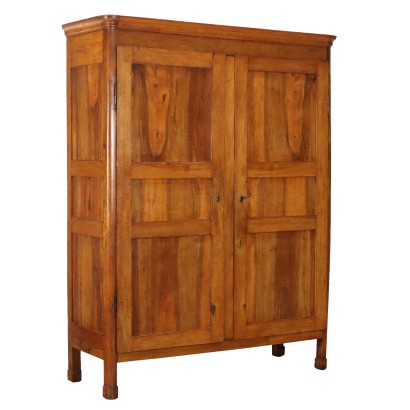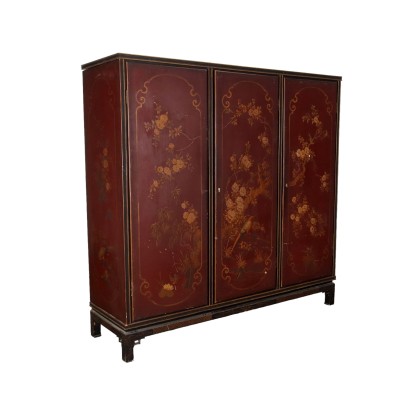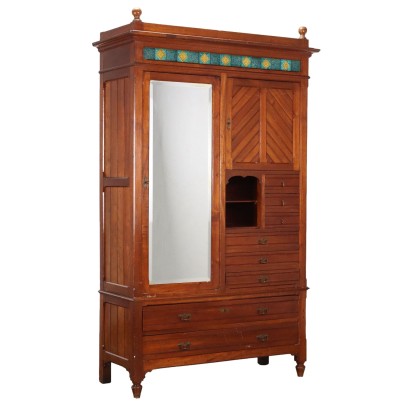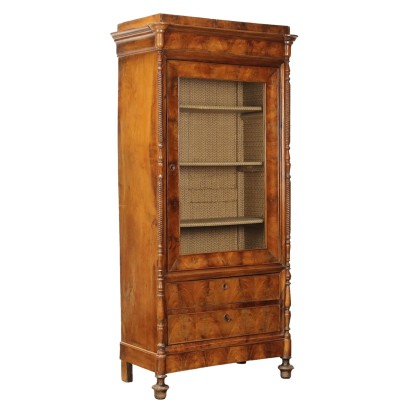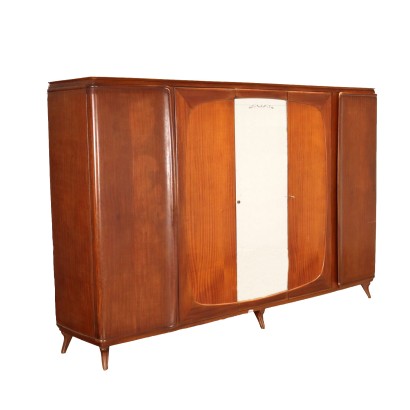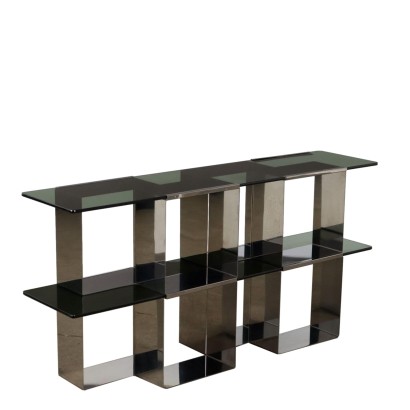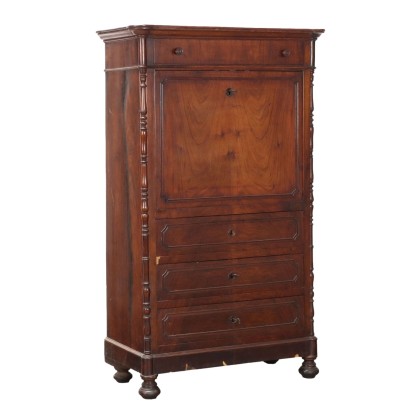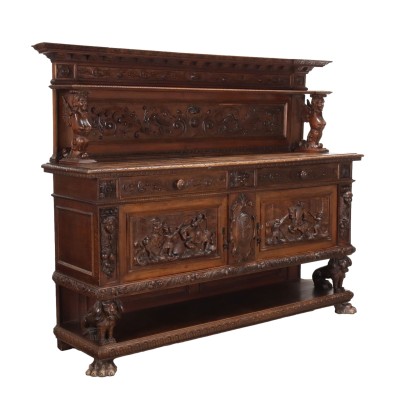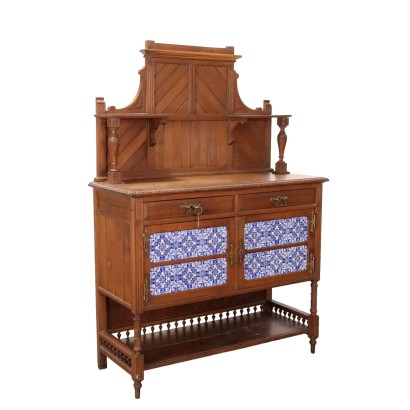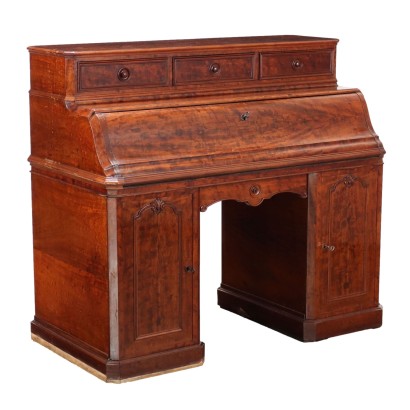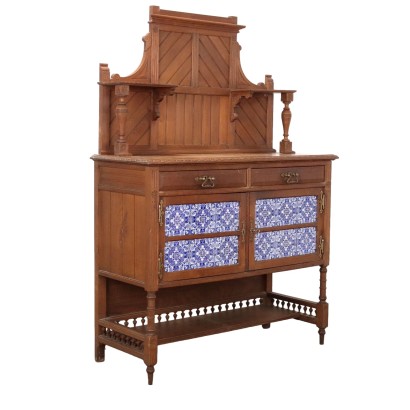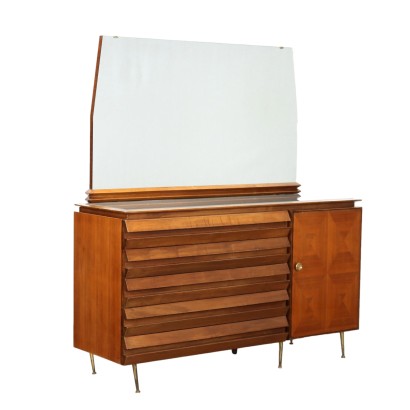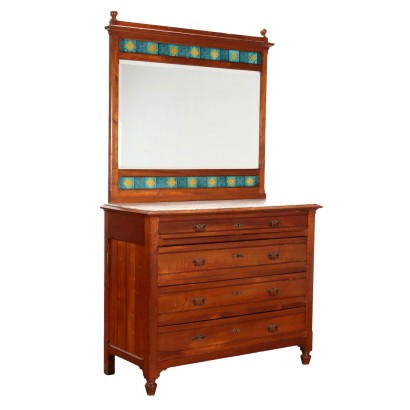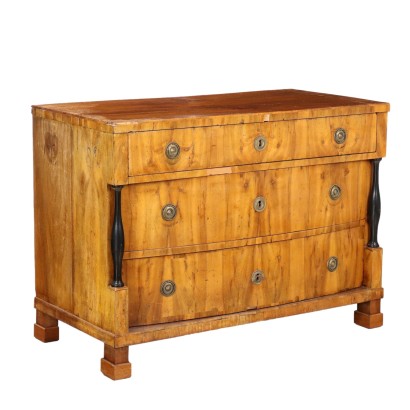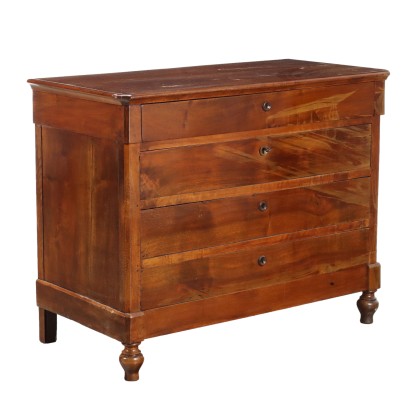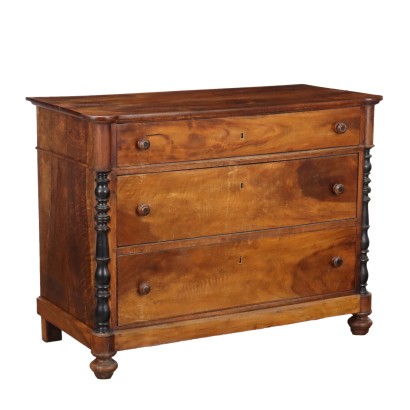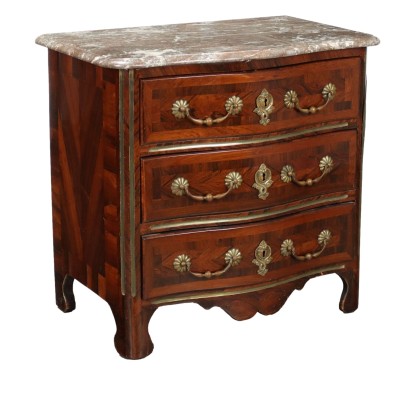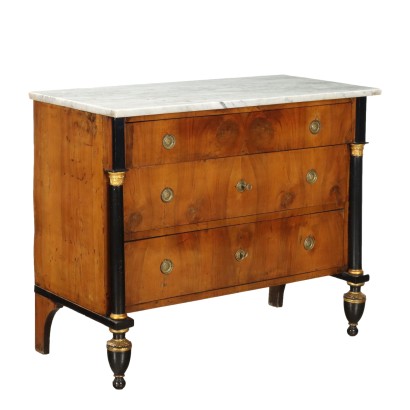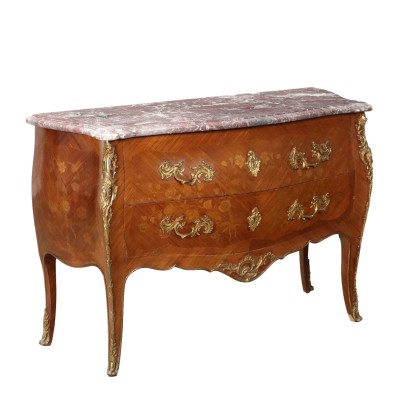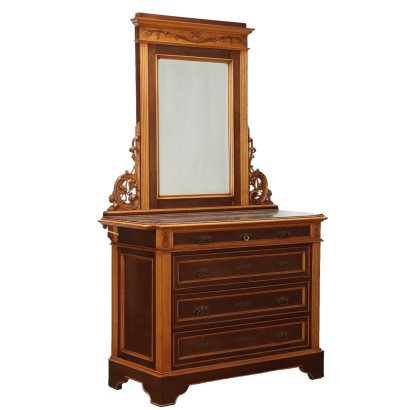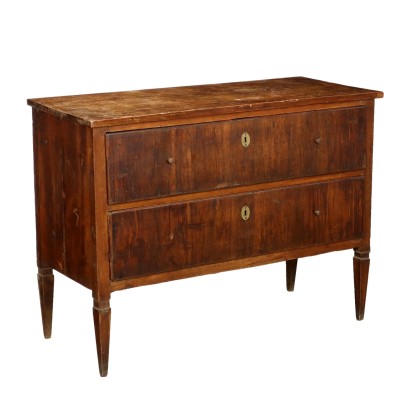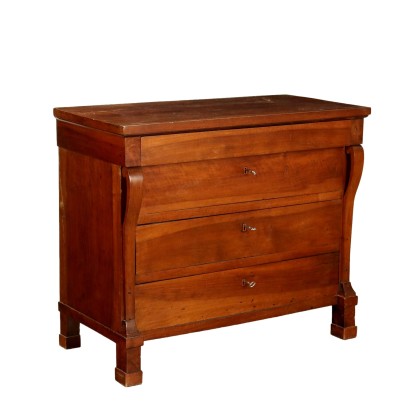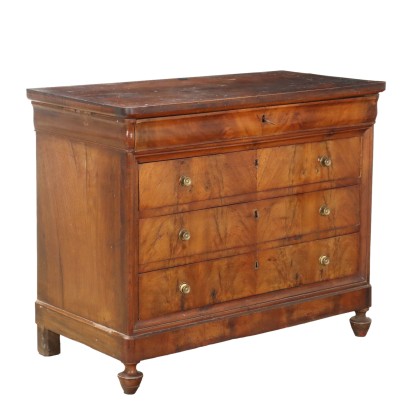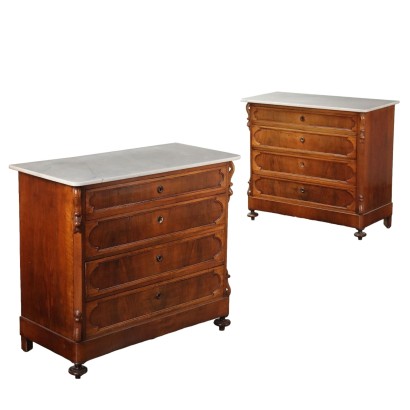Antique Wardrobe Charles X Walnut Poplar Drawer XIX Century - Piedmont Second Quarter XIX Century
Features
Piedmont Second Quarter XIX Century
Age: 19th Century / 1801 - 1900
Origin: Piemonte
Description
Charles X wardrobe in walnut, two tripartite doors, internal drawer, poplar back. Piedmont, second quarter of the 19th century.
Product Condition:
Product that due to age and wear requires restoration and polishing. We try to present the real condition of the furniture as completely as possible with the photos. If some details are not clear from the photos, what is reported in the description is valid.
Dimensions (cm):
Height: 213
Width: 166
Depth: 57,5
Maximum size (cm):
Height: 213
Width: 166
Depth: 57,5
Additional Information
Age: 19th Century / 1801 - 1900
19th Century / 1801 - 1900Main essence:
Walnut
Walnut wood comes from the plant whose botanical name is juglans regia , probably originally from the East but very common in Europe. Light or dark brown in color, it is a hard wood with a beautiful grain, widely used in antique furniture. It was the main essence in Italy throughout the Renaissance and later had a good diffusion in Europe, especially in England, until the advent of mahogany. It was used for solid wood furniture and sometimes carvings and inlays, its only big limitation is that it suffers a lot from woodworm. In France it was widely used more than anything else in the provinces. In the second half of the eighteenth century its use decreased significantly because mahogany and other exotic woods were preferred.Poplar
Essence considered "poor", it is a white wood, with yellowish or greyish shades, light and tender, which is easily damaged. It is used for rustic furniture or in the construction of furniture. The most valuable use it has had in the history of furniture is in Germany, in the 19th century, for veneers and inlays in the Biedermeier period.Other customers have searched:
Armadio, armadio, stipo, dispensa, guardaroba..
Approfondimenti
Per saperne di più sugli armadi antichi, consulta i nostri approfondimenti:
Semplicità e funzionalità dell'armadio lombardo tra '600 e '700
Gli arredi di antiquariato by FineArt
Uno stipo toscano tra XVI e XVII secolo
Sull'antiquariato in generale dai un'occhiata anche a
Classic Monday: da un pezzo dei nostri magazzini alla storia dell'antiquariato
L'antiquariato dalla A alla Z: il Dizionario dell'Antiquariato
Il dizionario dell'antiquariato - Lastronatura
Il dizionario dell'antiquariato - Mascherone
Il dizionario dell'antiquariato - Natura morta
Il dizionario dell'antiquariato - Opificio
Il dizionario dell'antiquariato - Pastiglia
Il dizionario dell'antiquariato - Savonarola
Il dizionario dell'antiquariato - Rosone
Intaglio barocco con motivo a ricciolo
Approfondimenti
Per saperne di più sugli armadi antichi, consulta i nostri approfondimenti:Semplicità e funzionalità dell'armadio lombardo tra '600 e '700
Gli arredi di antiquariato by FineArt
Uno stipo toscano tra XVI e XVII secolo
Sull'antiquariato in generale dai un'occhiata anche a
Classic Monday: da un pezzo dei nostri magazzini alla storia dell'antiquariato
L'antiquariato dalla A alla Z: il Dizionario dell'Antiquariato
Il dizionario dell'antiquariato - Lastronatura
Il dizionario dell'antiquariato - Mascherone
Il dizionario dell'antiquariato - Natura morta
Il dizionario dell'antiquariato - Opificio
Il dizionario dell'antiquariato - Pastiglia
Il dizionario dell'antiquariato - Savonarola
Il dizionario dell'antiquariato - Rosone
Intaglio barocco con motivo a ricciolo
Alternative proposals
It could also interest you

